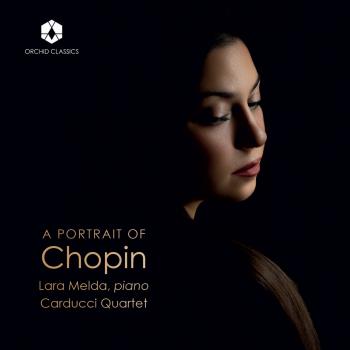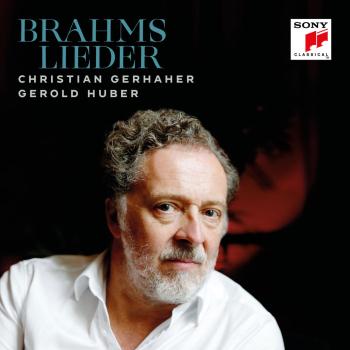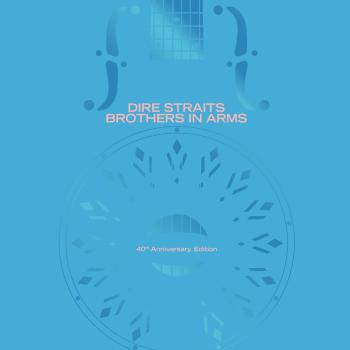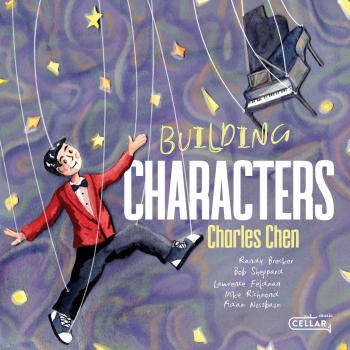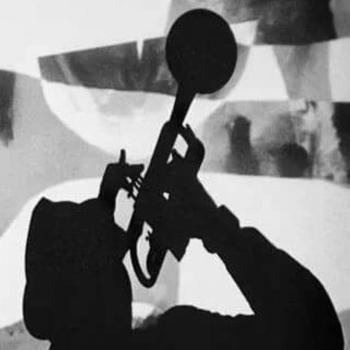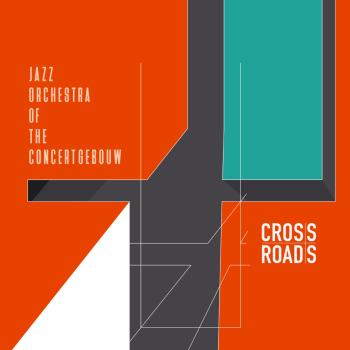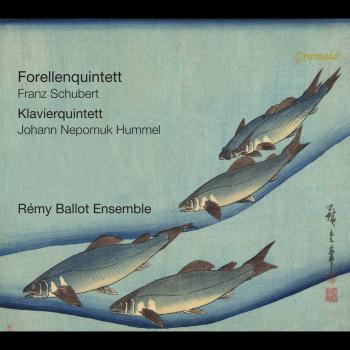
Schostakowitsch: Sinfonie Nr. 15 in A-Dur, op. 141/ Mozart: Haffner Sinfonie Duisburg Philharmonic Orchestra - Jonathan Darlington
Album info
Album-Release:
2009
HRA-Release:
29.09.2010
Label: ACOUSENCE
Genre: Classical
Subgenre: Orchestral
Artist: Duisburg Philharmonic Orchestra - Jonathan Darlington
Composer: Dimitri Schostakowitsch (1906-1975), Wolfgang Amadeus Mozart
Album including Album cover Booklet (PDF)
- Dmitri Schostakowitsch (1906-1975): Sinfonie Nr. 15 in A-Dur op. 141
- 1 Symphony No. 15 in A major op. 141 - I. Allegretto 08:17
- 2 Symphony No. 15 in A major op. 141 - II. Adagio – Largo – Adagio – Largo 14:45
- 3 Symphony No. 15 in A major op. 141 - III. Allegretto 04:22
- 4 Symphony No. 15 in A major op. 141 - IV. Adagio – Allegretto – Adagio – Allegretto 15:28
- Wolfgang Amadeus Mozart (1756-1791): Sinfonie Nr. 35 in D-Dur ('Haffnersinfonie') KV 385
- 5 Symphony No. 35 in D major (`Haffner´) KV 385 - I. Allegro con spirito 05:32
- 6 Symphony No. 35 in D major (`Haffner´) KV 385 - II. Andante 07:30
- 7 Symphony No. 35 in D major (`Haffner´) KV 385 - III. Menuetto – Trio 02:52
- 8 Symphony No. 35 in D major (`Haffner´) KV 385 - IV. Presto 03:55
Info for Schostakowitsch: Sinfonie Nr. 15 in A-Dur, op. 141/ Mozart: Haffner Sinfonie
An atmospherically concise piece, a respiring string sound, various colour effects and a powerful internal force characterize this live recording - an extremely intensive, impressive performance!
Dimitri Shostakovich's Fifteenth Symphony.
The Symphony No. 15 in A major op. 141 is Dimitri Shostakovich's last orchestral work. It was written in 1971, four years before the composer's death, and although the symphony bears the distinct traces of a late work and Shostakovich had been struck by a serious illness, this is by no means his last musical creation.
'I want to write a happy symphony' Dimitri Shostakovich said to his younger colleague Boris Tischtschenko at the beginning of the year 1971. He had already been working on the new work for some time, but the first sketches were only completed in April. While returning from taking a cure on 27th June, he said to Alexander Cholodilin who was waiting for him at the railway station, that the work on the new symphony was finished, and a few days later the instrumentation was also completed. Retrospectively the composer remembered:
'I have done a lot of work on it. I wrote it in hospital, and later also, at the datcha, it gave me no peace. This is a work which simply swept me along with it, one of the few works which was completely clear to me from the beginning - from the first to the last note. It only had to be written down.'
Although this symphony, with which Shostakovich returned to the classical four-movement structure after nearly two decades, contains humorous elements, it is in reality a humour not to be trusted, and in many places the composition takes on an almost suffocating density of expression. The instrumentation is economical, and quotation plays an important role.
The first movement carries reminders of his early work, with pronounced sarcastic features. The five repetitions of the gallop from Gioacchino Rossini's 'William Tell' overture may at first amuse, but the isolation and foreignness of these unexpected inserts appear ultimately particulary threatening. The short first movement is economically orchestrated and includes numerous solos. The exposition allows the woodwind to dominate, in the development the percussion instruments make themselves heard and finally involve the brass group. The reprise substantially changes the opening material, and ends with an abrupt tutti blow. In this way Shostakovich reminds us of a world which in this form no longer exists. The composer himself called this movement a 'toy shop' but the conductor Kurt Sanderling qualifies this by arguing that in this 'toy shop' there are only soulless, dead toys which only come to life when they are operated like puppets.
The gloomy Adagio has the character of a funeral march. Here a twelve-tone-theme of the solo cello weaves through the brass chorale. Later a solo violin also joins in and the first trombone takes on a solo function, too. There are particular associations with the first movement of the sixth symphony, and after a climax, the tension is taken away gradually, until the Adagio leads directly into the third movement.
This third movement is one of the shortest Shostakovich-scherzos. Sparingly instrumented the music seems almost skeletonized. The main theme is again twelve-tone structured, which is contrasted by the commitment to weighty bassoon fifths.
The last Shostakovich symphony reaches its climax in its finale. The movement is opened by three significant Wagner-quotes. The brass plays the Destiny-motive from 'Walküre' first, the timpani rhythm of the funeral music from 'Götterdämmerung' follows. In contrast to these, the opening motive from 'Tristan und Isolde' is taken up, which then directly flows into the calm main theme of the movement. The character of the second subject can hardly be called dramatic either, which is the reason why this disposition knows no parallels in the final movements of the Shostakovich's symphonies. The dramatic development only begins in the middle part, a monumental Passacaglia, which corresponds to the 'Invasion Eposode' in the 'Leningrad' Symphony. After the break-down, when the work with twelve-tone themes and the reprise of motives from the first movements have become superfluous, the percussion instruments have the last word. In this ghostly section the conductor Kurt Sanderling was reminded of the intensive care unit of a hospital, where in this case the vanishing of all life functions is displayed.
Under the direction of Maxim Schostakovich, the composer's son, the fifteenth symphony was premiered on January 8, 1972 in Moscow. What subsequently happened? Shostakovich took the longest break from working in his lifetime and did not compose a single note for one and a half years. Instead, he went on several journeys, received official honours and gained increasing international recognition. After the fifteenth symphony he wrote two string quartets, the Michelangelo songs for bass and piano, and a moving sonata for viola and piano. After several heart-attacks Dmitri Schostakovich died from cancer on August 9, 1975.
Duisburger Philharmoniker
Jonathan Darlington
LIVING CONCERT SERIES Vol. 6, 24Bit - 192kHz - High Definition Master Recording
Jonathan Darlington is music director of the Duisburg Philharmonic Orchestra and Vancouver Opera. His demand for the highest level of professionalism and precision, infused with genuine enthusiasm, has ever increased the quality and popularity of both orchestras.
With the Duisburg Philharmonic Orchestra, whose profile he has significantly moulded over the past years, he conducts eight subscription weeks each season in a broad range of symphonic repertoire, as well as concert tours, festival guest engagements and live recordings. With the Vancouver Opera, he conducts two new productions each season, together with gala concerts and “Opera in Concert” events.
His most recent operatic successes include the world première of Manfred Trojahn’s “La Grande Magia” with the Staatkapelle Dresden, Gustave Charpentier’s “Louise” with the Deutsche Oper am Rhein, Strauss’ “Salome” with Vancouver Opera, “Beethoven’s “Fidelio” with the Opera Australia in Sydney, as well as the Robert Lepage directed Stravinsky’s “The Nightingale and Other Short Fables” at the Canadian Opera Company, Toronto. In March 2009 he also returned to the stage as accompanist for Schubert’s ‘Die Schöne Müllerin’ with the renowned baritone Dietrich Henschel. His most recent live recordings include Mahler’s Sixth Symphony, “Pelleas and Mélissande” by Schönberg and Fauré as well as the “Symphonic Ring” arrangement of Richard Wagner’s “Ring des Nibelungen”.
Sensitivity for depth and balance and an infectious dynamism are the hallmarks of Jonathan Darlington’s work. His vast symphonic and operatic repertoire ranges from the baroque to the contemporary, including lesser known works outside the European mainstream. He has a reputation for structuring programmes that take the listener on a fascinating musical journey, owing to their strong inner dramaturgy. He is especially committed to exploring connections between less easily accessible contemporary works and well known classical ones, surprising his audience with unexpected connections and resemblances. Fluent in several languages and at home in three countries, he thrives on the music making that comes as a result of the contact with different cultures and traditions.
Renowned for his broad repertoire, he gives regular guest appearances with major orchestras and opera houses the world over. Among the numerous orchestras where he is a regular guest are, to name a few, the Orchestre National de France, the Staatskapelle Dresden, the Prague Radio Symphony Orchestra, the Swedish Chamber Orchestra, the Orchestra Sinfonica del San Carlo di Napoli, the Orchestre Philharmonique de Strasbourg, the National Orchestra of Taiwan, the Warsaw Philharmonic, the BBC Symphony Orchestra, the Orchestre National de Bordeaux-Aquitaine, the English National Opera and Sydney Opera. He is a regular guest of many major European festivals, such as Amsterdam, Montreux and the Piano Festival Ruhr (Germany), as well as the German cutting edge arts festival RuhrTriennale.
Jonathan Darlington began his career as freelance pianist, accompanist and repetiteur. Born in Lapworth near Birmingham, UK, he studied music at Durham University and piano at the Royal Academy of Music, London, winning several prizes especially for his Lieder accompaniment. After graduation, he moved to Paris, where, with Radio France, he had the chance to work with some of the most outstanding musical personalities of our time; Pierre Boulez (Le soleil des eaux), Riccardo Muti (Verdi Requiem) and Olivier Messiaen (Trois petites liturgies). As a freelance recitalist and accompanist, he travelled France and the UK, working for the Nancy Opera and the French experimental touring company ARCAL, which he soon took over as music director. As member of the music staff of the Aldeburgh School for Advanced Studies, he worked with such renowned singers as Elisabeth Schwarzkopf, Ileana Cotrubas, Hugues Cuenod, Susanne Danko, Hans Hotter, Janet Baker and Peter Pears.
He made his conducting debut in 1984 at the Parisian Théâtre des Champs Elysées with Francesco Cavalli’s baroque opera “Ormindo”. An important stepping stone in his career was the Berlioz Festival Lyon, where he was assistant to Serge Baudo for “Les Troyens” in 1987, and later to John Nelson for “Benvenuto Cellini” (1989). In 1990 Myung-Whun Chung engaged Mr. Darlington as deputy to the music director at the Opéra de la Bastille, Paris, where he made his acclaimed debut in 1991 with “Le nozze di Figaro”, starring a dream cast including Renée Fleming and Cecilia Bartoli. He remained with the Paris Opera as deputy music director until 1993, conducting successes like “Die Zauberflöte” and “Das Lied von der Erde”. His “Swan Lake” with the Opéra de Paris was recorded for video in 1992.
Jonathan Darlington believes that music is at its best produced live and not in the studio, the audience being an integral part of the performance. His new series of audiophile live recordings with the label Acousence, recorded in the new Mercatorhalle, the Duisburg Philharmonic’s rebuilt and acoustically perfected concert hall, best meets this artistic credo.
He is also a driving force behind the DU Phil’s new media project, designed to reach out to new audiences and to bring classical music to the web 2.0. Darlington regularly writes for, and is featured in interviews and reports on the Duisburg Philharmonic’s new blog, “Dacapo”, and strongly supports the Vancouver Opera’s innovative online portal, “VOlive!”.
Jonathan Darlington holds the distinctions of a BA Honours degree of Durham University, a Chevalier des Arts et des Lettres, an Honorary LRAM and a Fellow of the Royal Academy of Music, London (FRAM).
Booklet for Schostakowitsch: Sinfonie Nr. 15 in A-Dur, op. 141/ Mozart: Haffner Sinfonie

